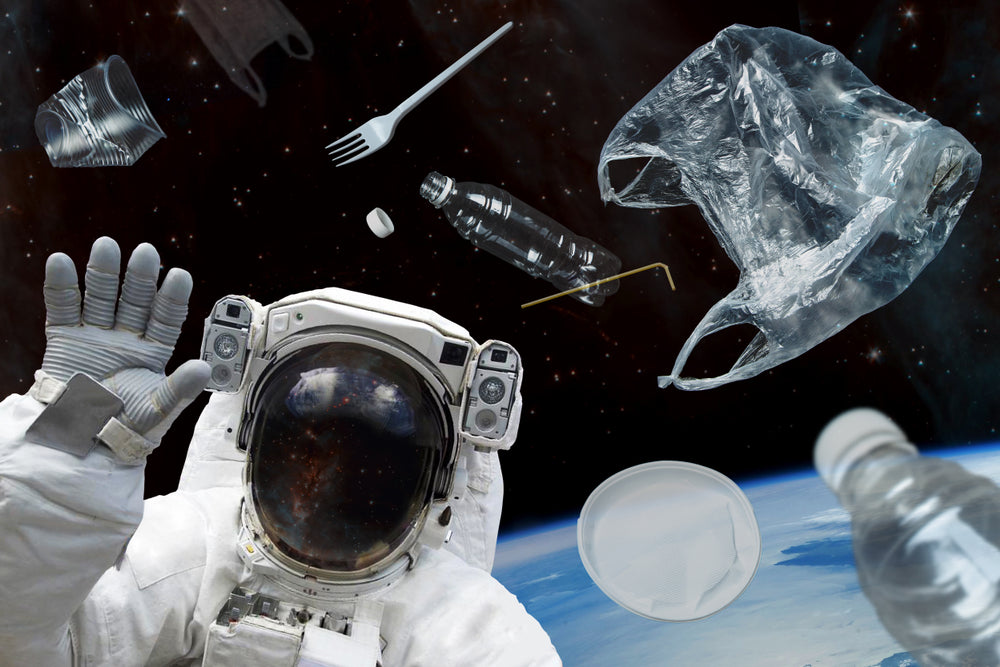
A.I. is Learning How To Dodge Space Junk, So You Don't Have To
Share
A space debris-dodging system powered by AI could replace expert teams dealing with the growing number of orbital collision threats in the increasingly clogged near-Earth space.
Every two weeks, spacecraft controllers at the European Space Operations Centre (ESOC) in Darmstadt, Germany, have to conduct avoidance manoeuvres with one of their 20 low Earth orbit satellites, according to Holger Krag, the Head of Space Safety at the European Space Agency (ESA).
Each close encounter requires a multidisciplinary team to be on call 24/7 for several days, meaning that there are at least five times as many close encounters that the agency has to monitor and evaluate.
"Every collision avoidance manoeuvre is a nuisance," Krag said. "Not only because of fuel consumption but also because of the preparation that goes into it. We have to book ground-station passes, which costs money, sometimes we even have to switch off the acquisition of scientific data. We have to have an expert team available round the clock."

Space rubbish, refuse, garbage, junk, fodder, flim flam and leftovers are some of the names I thought of just then.
These kinds of situations are only going to get more common. You don't always get collision alerts from space junk. SpaceX, OneWeb and Amazon are building mega-constellations of thousands of satellites, launching more in a month than used to be launched in a year just a few years ago. Space debris experts are worried about this increased space traffic. According to ESA, nearly half of the conjunction alerts they monitor involve small satellites and constellation spacecraft.
Therefore, ESA invited the global Artificial Intelligence community to assist in developing a system that could do space debris dodging autonomously or at least reduce the burden on experts.
"We made a large historic data set of past conjunction warnings available to a global expert community and tasked them to use AI [Artificial Intelligence] to predict the evolution of a collision risk of each alert over the three days following the alert," Rolf Densing, Director of ESA Operations said in the news conference.
"The results are not yet perfect, but in many cases, AI was able to replicate the decision process and correctly identify in which cases we had to conduct the collision avoidance manoeuvre."
ESA is exploring newer AI approaches, like deep learning and neural networks, to make the algorithms more accurate, Tim Flohrer, ESA's Head of Space Debris Office, told Space.com.
The standard AI algorithms are trained on a lot of data, Flohrer said. "But the cases when we had actually conducted manoeuvres are not so many in AI terms. In the next phase we will look more closely into specialised AI approaches that can work with smaller data sets."

A pretty nifty looking office. Bit jelly tbh.
As of now, AI algorithms can help the ground-based teams monitor and evaluate conjunction alerts, which alert them when one of their satellites might collide with another orbiting object. Such artificial intelligence assistance will help reduce the number of experts involved and help the agency deal with the increased space traffic coming soon, according to Flohrer. Human operators still have to decide whether to do avoidance maneuvers or not.
"So far, we have automated everything that would require an expert brain to be awake 24/7 to respond to and follow up the collision alerts," said Krag. "Making the ultimate decision whether to conduct the avoidance manoeuvre or not is the most complex part to be automated and we hope to find a solution to this problem within the next few years."
Densing said that eventually the global community should team up to create a collision avoidance system like modern air traffic control, which would work automatically without the humans on the ground having to talk.
"In air traffic, they are a step further," Densing said. "Collision avoidance manoeuvres between planes are decentralised and take place automatically. We are not there yet, and it will likely take a bit more international coordination and discussions."
Scientific satellites are at risk of orbital collisions, but spacecraft like SpaceX's Crew Dragon are also at risk. Crew Dragon Endeavour, with four astronauts on board, reportedly came dangerously close to a piece of debris on Saturday, April 24. Collision alert forced spacefarers to interrupt their leisure time, get back in their suits and buckle up in their seats.
In 1957, the Soviet Union launched Sputnik. Since then, there have been about 11,370 satellite launches. About 6,900 of these satellites remain in orbit, but only 4,000 are still functioning.
Are you part of the growing community to clean up space?
Let us know in the comments to spread ARSE!
#Space_Aus




